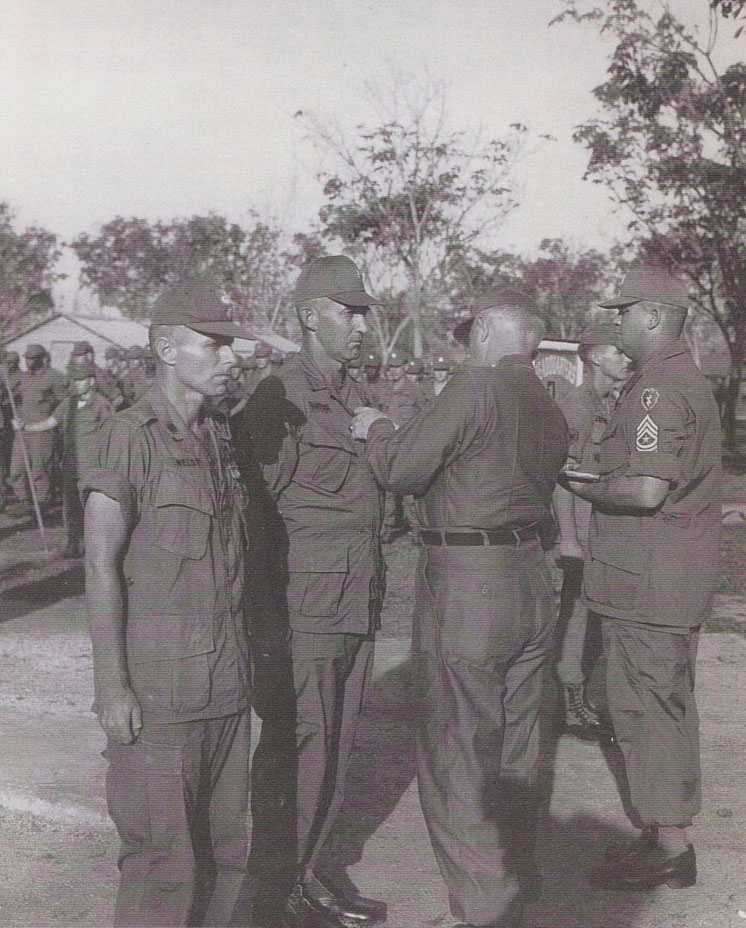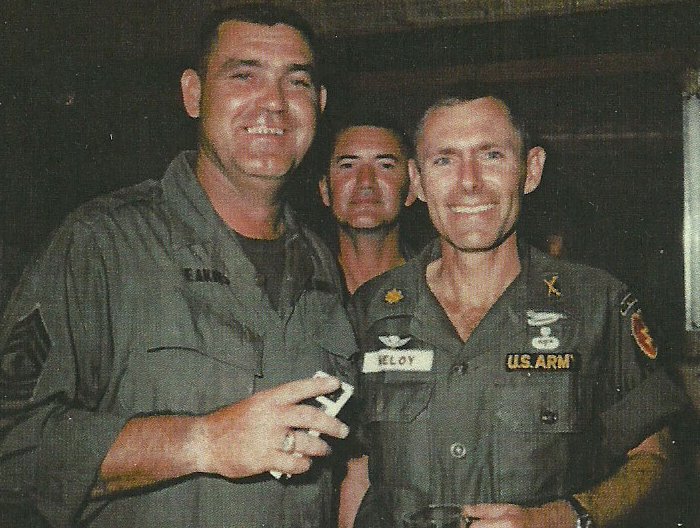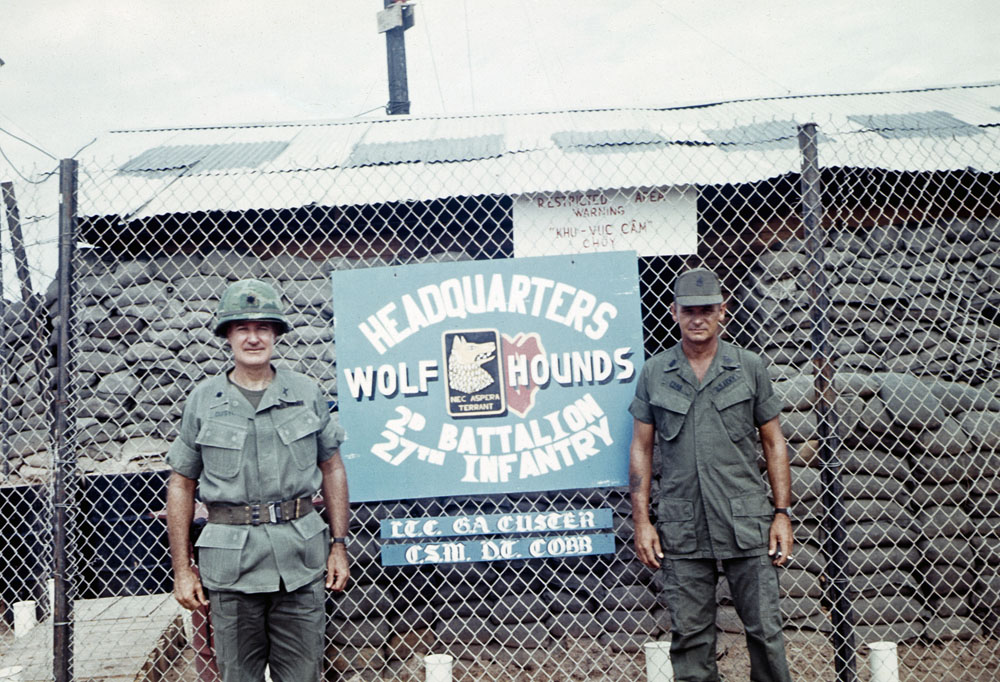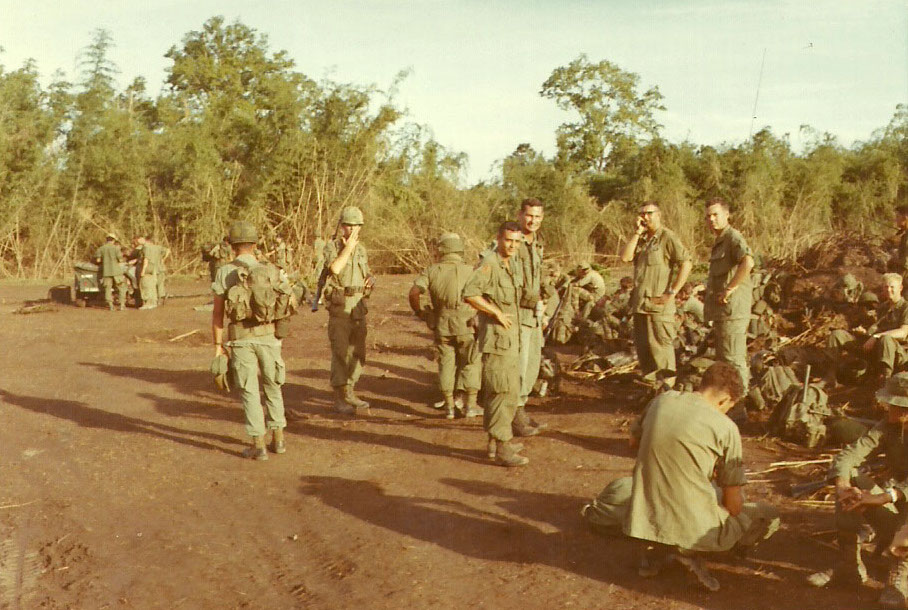Command Sergeants Major
by Howard Landon McAllister
One of the great traditions of the British Army is the regiment. The regimental sergeant major, or RSM, is at the heart of that tradition. It remains so because it has remained the same for centuries, although the nature and equipment of land warfare has undergone constant change. The U.S. Army has no real equivalent to the regimental sergeant major. One of the deplorable features of the American army of the Vietnam War era was constant organizational tinkering, as if each change in the top leadership required organizational changes as well. Often they were dysfunctional, or merely cosmetic, and the butt of continuous jokes at the lower levels. Each change was accompanied by a multitude of briefings tailored to the selling of the concept. One version of the infantry division called ROCID became the ROAD division in 1962, by which battalions became battle groups, the most unwieldy of organizations. The worst feature of the battle group was that it removed the middle officer grades, leaving colonels at the top and inexperienced lieutenants at the bottom. For obvious reasons, it did not last long.

This system made it nearly impossible to keep track of the lineage and honors of traditional regiments, so an army of bookkeepers did their best with CARS, another acronym which stood for Combat Arms Regimental System. Massive volumes were printed and circulated within the service, but little of it was information that made sense at the company or battalion level. For the most part, it was interpreted by various unit “experts.” If they ran into something they did not understand, the usually decided to make it up as they went. Warriors paid little attention to such things. Learning the hard skills of a combat infantryman was their animating force. It was the thing that got them elected to the club. To them, most of the rest was window dressing.
In infantry battalions, the Vietnam War was fought with a battalion sergeant major as the top enlisted rank. Some of them emerged from the war as men of legend. Few riflemen at the company level remember their sergeant major as being in combat except in very stressful situations or moments of great danger. Company first sergeants often shared in daily combat, and the soldiers expected to see them in risky situations. For that reason, first sergeants were rarely objects of the richly-embroidered tales told about the sergeants-major. And the men relished the colorful tales about them.
In the First Wolfhounds, Command Sergeant Major Jack Eakins is remembered as a leader, a guide and sometimes a father figure to many men, including junior officers. He had a crooked grin, and the solid, blocky look of a linebacker. A few surviving photographs show him in typical situations at awards ceremonies, with a coffee cup in hand during relaxed moments. He was there in the risky days early days of the war, when the First Wolfhounds reaffirmed their reputation as fighters. One of the stories that has survived is an incident in August 1966 near Trang Bang, when the battalion C&C helicopter was shot down. Eakins and his battalion commander had jumped from the low-flying helicopter which was shot down by enemy fire as they jumped. The full story of this fighting is in the first of the Tales of the Wolfhounds at this site.

Command Sergeant Major David T. Cobb served under the command of five battalion commanders in 1969 and 1970. The first two, Rittgers and Ebel, were wounded in action, a third was relieved, and the next one, Custer, was in command during the Renegade Woods fighting. Hodges, his final commander, led the battalion into Cambodia in 1970.
Throughout the fighting in the Renegade Woods, Cobb spent many hours with Custer over the battlefield. The battalion commander was frustrated by the difficulty of bringing airstrikes on enemy targets, and he grabbed Cobb’s rifle to mark targets with tracer bullets. Later Cobb would laughingly say, “It didn’t take him long to go through all of the tracers I had with me. After that, I tried to bring a spare rucksack filled with tracers.”
One of the popular television shows of that time was called “Rat Patrol,” involving wild tales of derring-do by soldiers in earlier wars using jeeps with pedestal-mounted machine guns. Similar vehicles were used in the Vietnam War, usually for the purpose of road convoy protection. One of the stories told in the Second Wolfhounds was that Command Sergeant Major Cobb had organized a Rat Patrol squadron of his own. The story is still being repeated by grizzled veterans of that war.

In 1970, American presence in the Vietnam War was drawing down, and the battalion went through several rapid changes in mission. Within days of the battle in the Renegade Woods in April 1970, the battalion was hastily prepared for a combat air assault into Cambodia as a blocking force, while armor and mechanized infantry drove toward them. Cobb was a reassuring figure throughout the operation, with his pack on his back and his rifle in his hand. A photograph taken at the end of the operation shows him on the pickup zone as the unit waited for Chinooks to lift the out of Cambodia and return them to Vietnam.
Shortly afterward, with his tour behind him, he left Vietnam and returned home. A short time later the Second Wolfhounds would return their colors to Hawaii. Today, Cobb and his wife live quietly in retirement in their Columbia, South Carolina home.

Copyright 2012 by Howard Landon McAllister
